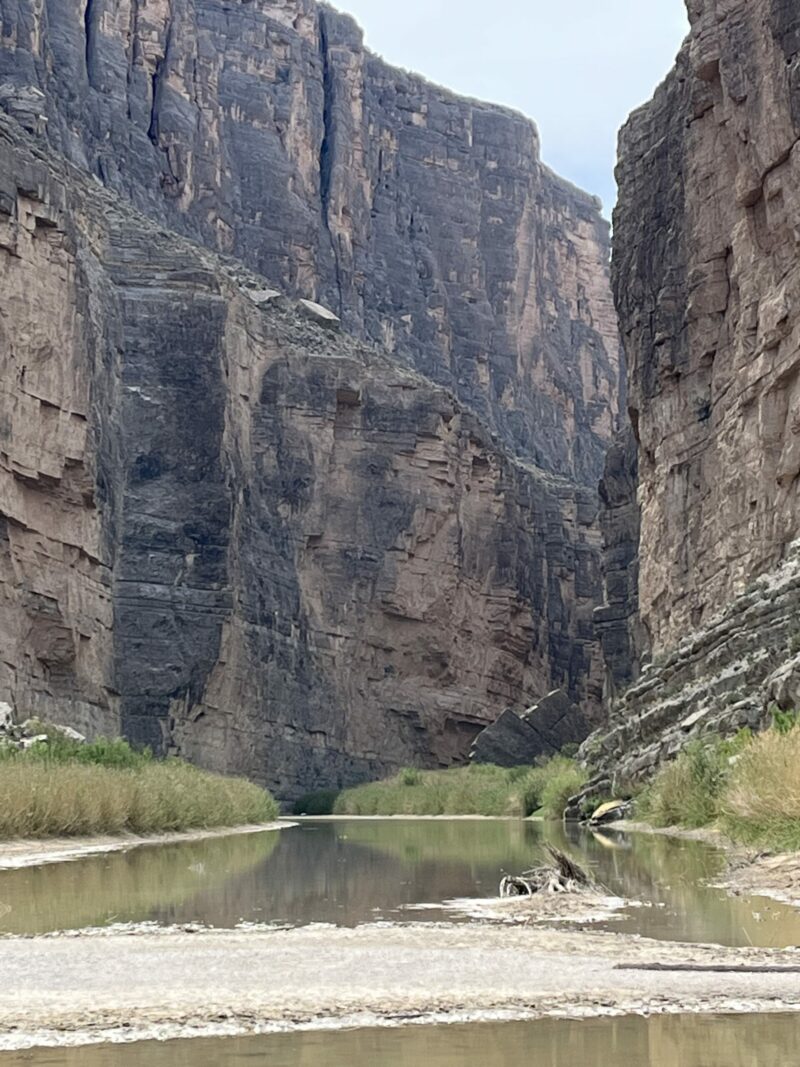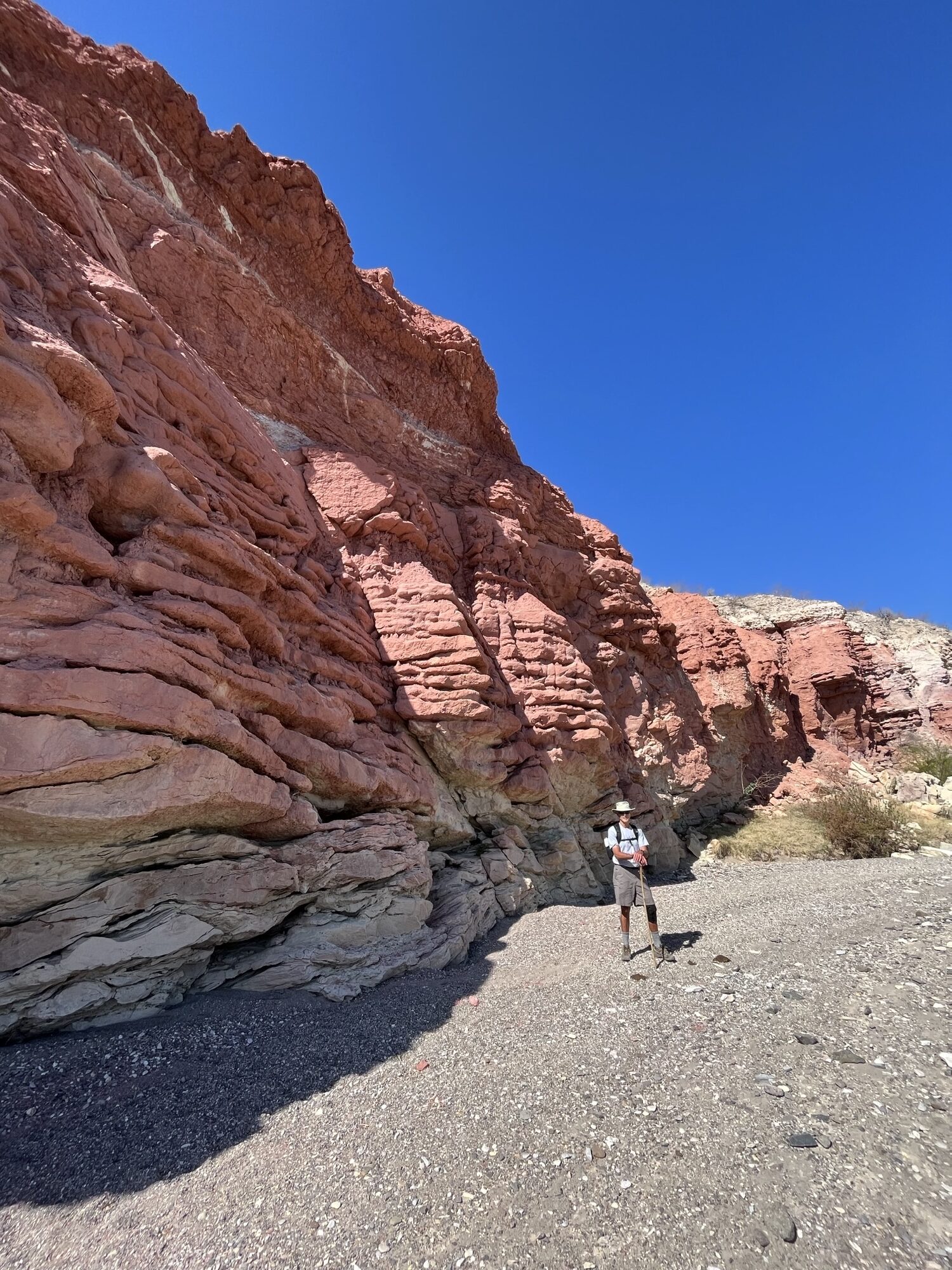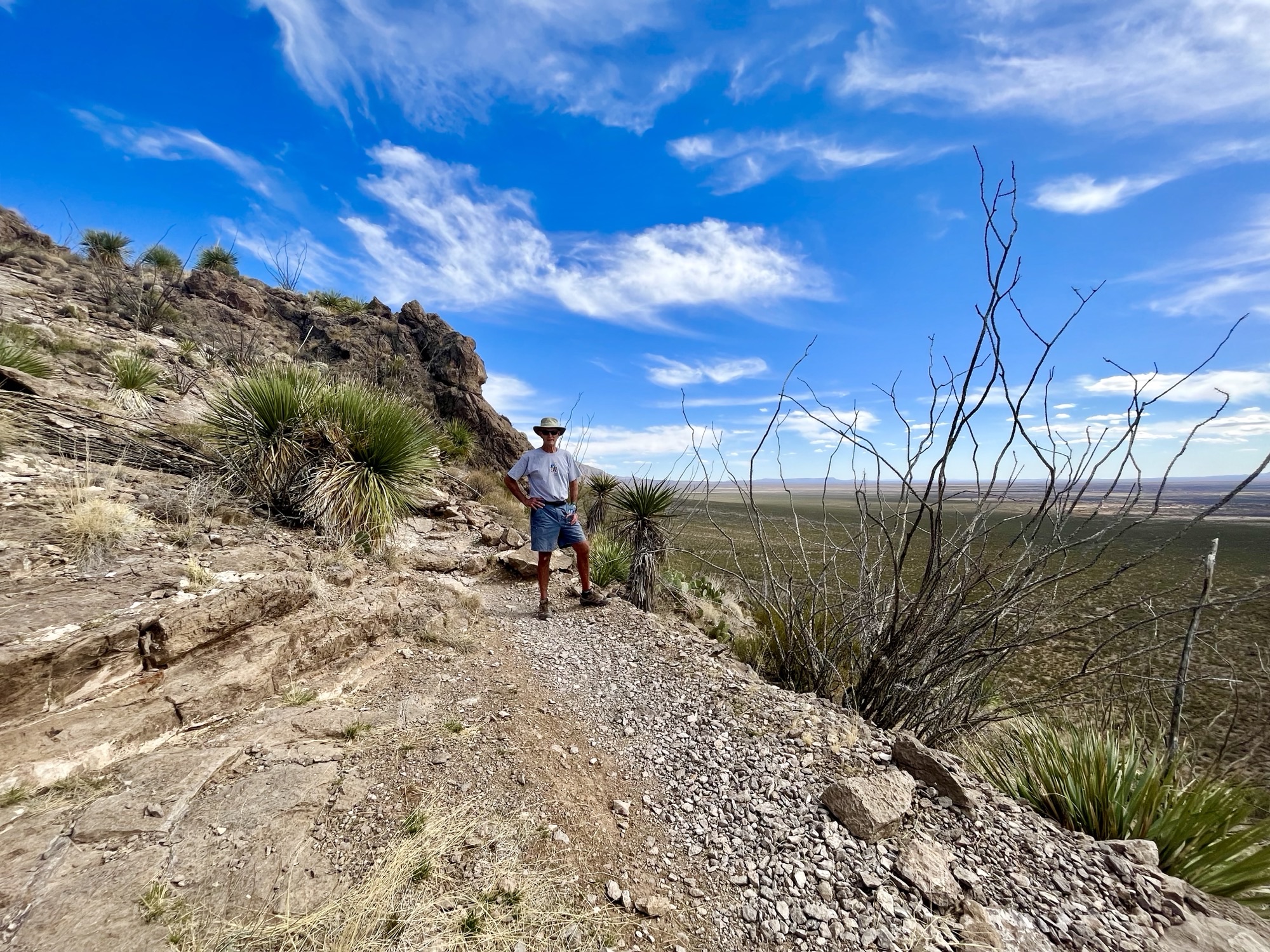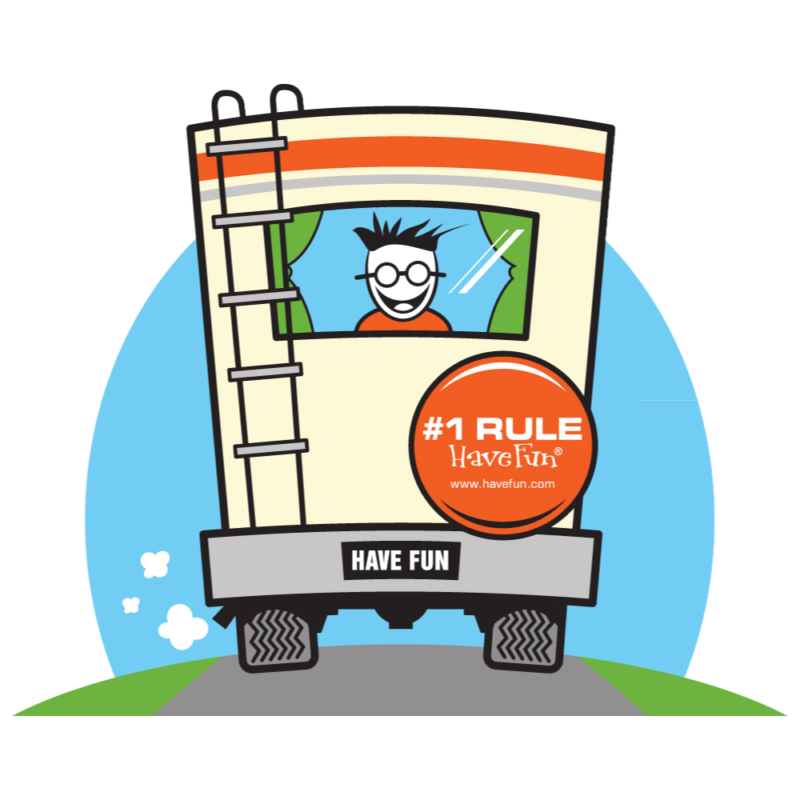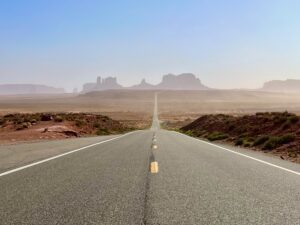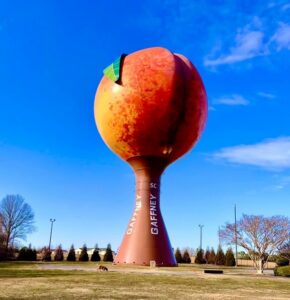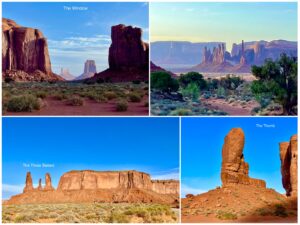The Big Bend National Park
We spent all day exploring the Big Bend National Park by vehicle and the entrance is about 50 miles from our RV site in Lajitas, as you see it at the far left on the map. It took eight hours to drive all around the huge park with over 800,000 acres, and Della joined us, sleeping most of the time in the back seat. In fact, the Big Bend consists of three things: The River, The Desert, and The Mountains. This majestic park does not disappoint, and every single road is scenic. We must have driven almost 200 miles all around in one park. And our truck is literally covered with white dust, after surviving on a 13-mile shortcut dirt road called Old Maverick. So is our RV, since southwestern Texas is extremely dusty. We will clean both vehicles after we get out of the state in a few days…
One may wonder why this park is called Big Bend: “The region was named Big Bend for the drastic change in course of the river from a southeastern to a northeastern flow. As the Rio Grande flows through the Chihuahuan Desert, it carves not only majestic canyons, but also a political boundary.” Mexico originally owned part of the Big Bend until the treaty of Guadalupe Hidalgo was signed in 1848. The earliest settlers were Mexicans who established residence here in the early 1800s. Therefore, the culture and history of Big Bend is still intertwined with Mexico. I will explain an interesting example later in this update.
We drove through beautiful massive canyons, desert expanses, and forested mountains from an elevation of less than 1,800 feet along the Rio Grande to nearly 8,000 feet in the Chisos Mountains. Of course, it was hot on the desert but much cooler up in the mountains where you see more evergreens and animals. A black wild pig (or called javelina) crossed our road; we also saw a mother auodad and its baby (exotic Barbary sheep with curved horns) right before ziplining the other day. Because of the dry climate, there are rare animal sightings in the Big Bend.
The Rio Grande River is, well, half-empty and stagnant at this time of the year; however, we were delighted to see this famous border river in three spots. What interested me the most was Boquillas Canyon Overlook, located at the far right of the park. It is where you see a Mexican village across the narrow, shallow river, and the overlook has Mexican products spread across on the ground and rocks, as you see the picture. We hear that permitted Mexicans get in their canoe each morning, climb up on our side, and set up their handmade products for sale and even leave the money jar. And then they come back in the end of the day to pick up the products and money. All these colorful products range from whiskey shot glasses to walking sticks. I bought two plate covers embroidered with woven sunflowers priced at ten dollars each – and of course, I faithfully left $20 in the jar. That shows the true blend of American and Mexican cultures in the Big Bend.
The Big Bend is a must-see and indicates that everything in Texas is big. We will be sorry to leave here tomorrow for a night in El Paso (or someplace nearby) and then say goodbye to the Lone Star State. I have learned so much about Texas as well as admired it for its magnitude, beauty, and wonder.
